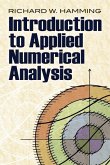This two-volume set explains the basic properties of a neuron - an electrically active nerve cell - and develops mathematical theories for the way neurons respond to the various stimuli they receive.
The human brain contains billions of nerve cells whose activity plays a critical role in the way we behave, feel, perceive, and think. This two-volume set explains the basic properties of a neuron - an electrically active nerve cell - and develops mathematical theories for the way neurons respond to the various stimuli they receive. Volume 1 contains descriptions and analyses of the principal mathematical models that have been developed for neurons in the past thirty years. It provides a brief review of the basic neuroanatomical and neurophysiological facts that will form the focus of the mathematical treatment. Tuckwell discusses the mathematical theories, beginning with the theory of membrane potentials. He then goes on to treat the Lapicque model, linear cable theory, and time-dependent solutions of the cable equations. He concludes with a description of Rall's model nerve cell. Because the level of mathematics increases steadily upward from Chapter Two, some familiarity with differential equations and linear algebra is desirable.
Review quote:
"It will undoubtably prove to be very useful for experimentalists...Its application will clearly help experimentalists and modelers to better understand thte behavior of their research system...an up-to-date comprehensive effort that encompasses the major analytical approaches to neuronal modeling at the cellular level." --Physics Today
Table of contents:
Preface; 1. Introductory neuroanatomy and neurophysiology: the properties of motoneurons; 2. The classical theory of membrane potentials; 3. The Lapicque model of the nerve cell; 4. Linear cable theory for nerve cylinders and dendritic trees: steady-state solutions; 5. Time-dependent cable theory for nerve cylinders and dendritic trees; 6. Rall's model neuron; References.
The human brain contains billions of nerve cells whose activity plays a critical role in the way we behave, feel, perceive, and think. This two-volume set explains the basic properties of a neuron - an electrically active nerve cell - and develops mathematical theories for the way neurons respond to the various stimuli they receive. Volume 1 contains descriptions and analyses of the principal mathematical models that have been developed for neurons in the past thirty years. It provides a brief review of the basic neuroanatomical and neurophysiological facts that will form the focus of the mathematical treatment. Tuckwell discusses the mathematical theories, beginning with the theory of membrane potentials. He then goes on to treat the Lapicque model, linear cable theory, and time-dependent solutions of the cable equations. He concludes with a description of Rall's model nerve cell. Because the level of mathematics increases steadily upward from Chapter Two, some familiarity with differential equations and linear algebra is desirable.
Review quote:
"It will undoubtably prove to be very useful for experimentalists...Its application will clearly help experimentalists and modelers to better understand thte behavior of their research system...an up-to-date comprehensive effort that encompasses the major analytical approaches to neuronal modeling at the cellular level." --Physics Today
Table of contents:
Preface; 1. Introductory neuroanatomy and neurophysiology: the properties of motoneurons; 2. The classical theory of membrane potentials; 3. The Lapicque model of the nerve cell; 4. Linear cable theory for nerve cylinders and dendritic trees: steady-state solutions; 5. Time-dependent cable theory for nerve cylinders and dendritic trees; 6. Rall's model neuron; References.








